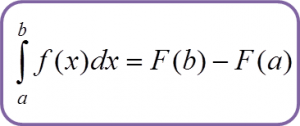3.2 Integration by Substitution
It is given that
∫(ax+b)ndx,n≠−1.
(A) Using the Substitution method,
Let u=ax+bThus, dudx=a ∴dx=dua
Example 1:
∫(3x+5)3dx.Let u=3x+5 dudx=3dx=du3∫(3x+5)3dx=∫u3du3 ←substitute 3x+5=uand dx=du3=13∫u3du=13(u44)+c=13((3x+5)44)+c ← substitute back u=3x+5 =(3x+5)412+c
(B) Using Formula method
∫(ax+b)n=(ax+b)n+1(n+1)a+cHence,∫(3x+5)3dx=(3x+5)44(3)+c=(3x+5)412+c
Example 2 (Formula method):
∫(ax+b)n=(ax+b)n+1(n+1)a+cHence,∫(3x+5)3dx=(3x+5)44(3)+c=(3x+5)412+c
∫(ax+b)n=(ax+b)n+1(n+1)a+cHence,∫(3x+5)3dx=(3x+5)44(3)+c=(3x+5)412+c

